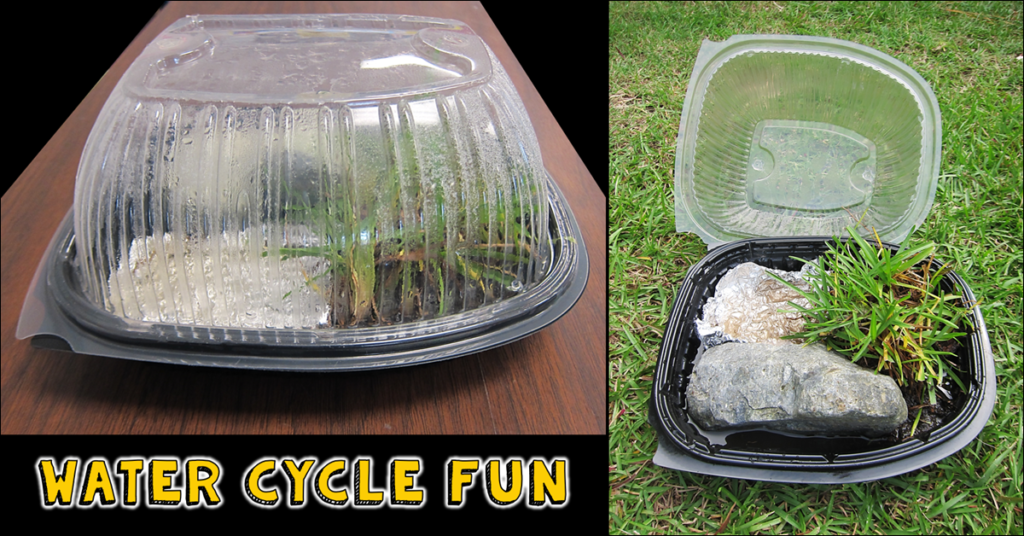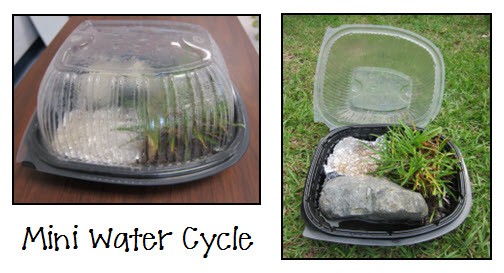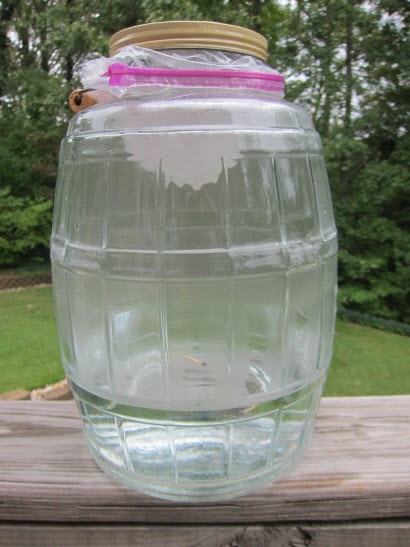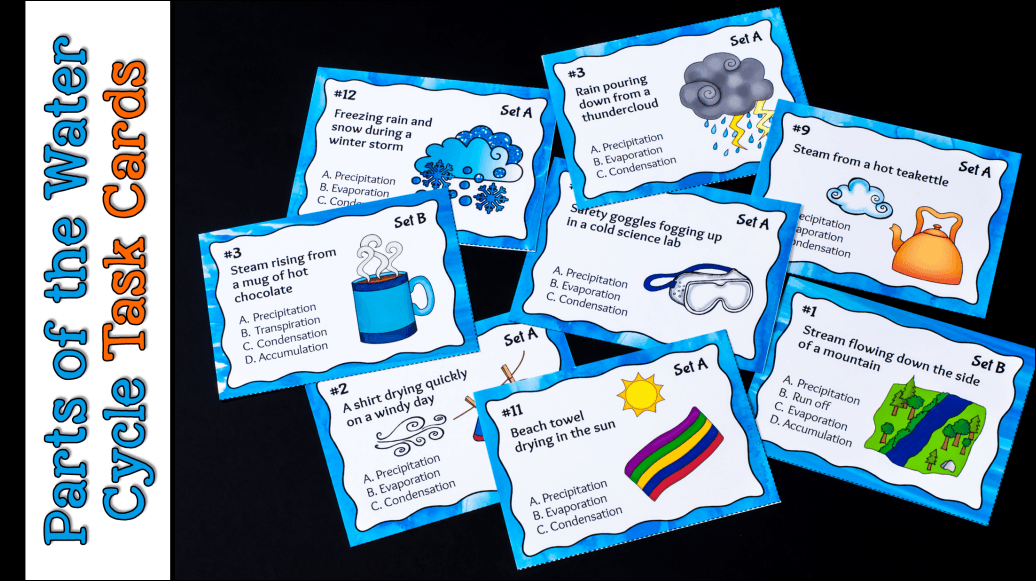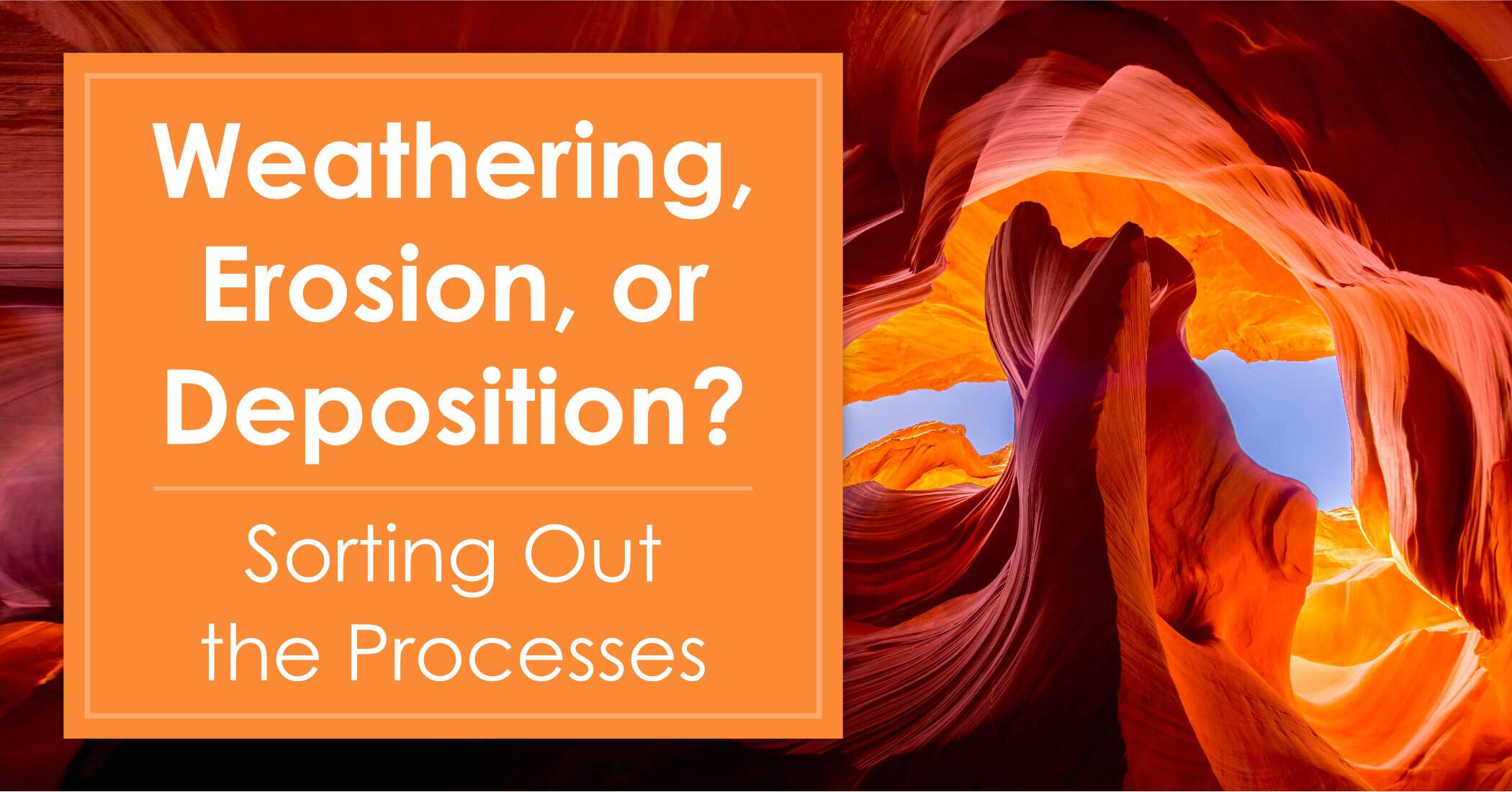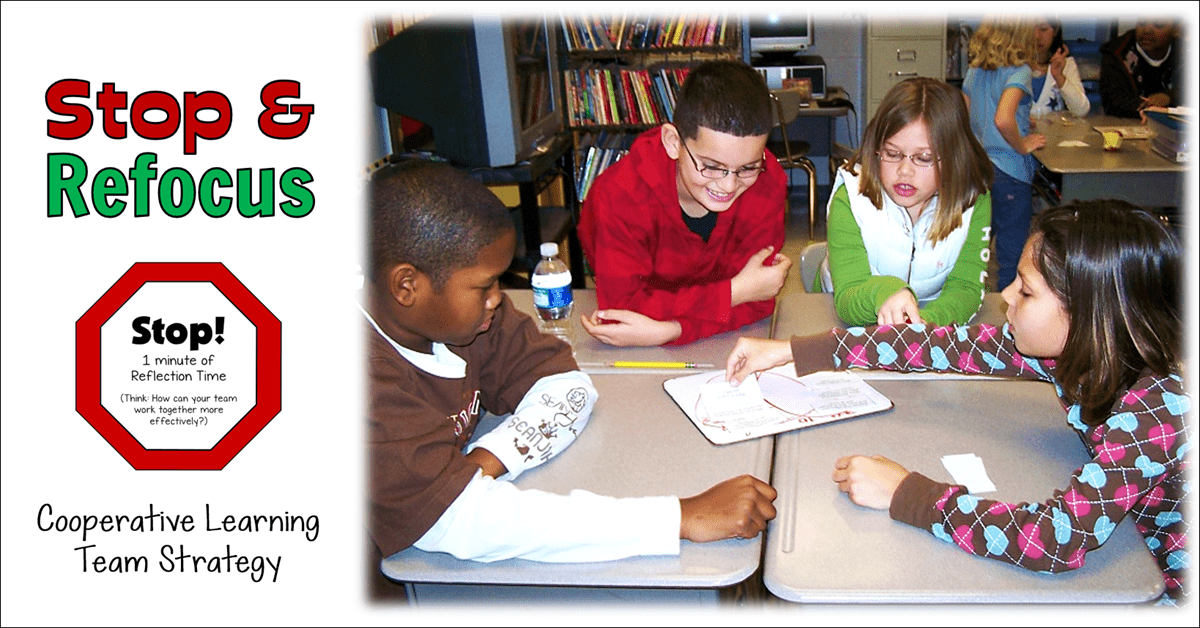One summer I accepted a position at a local school to work with kids during their year round intersession program, and I had the pleasure of teaching science to 5th graders for 3 days. I had a wonderful time teaching them about the water cycle and weather! Two favorite lessons were a hands-on water cycle activity and an exciting cloud-formation demonstration.
Create a Mini Water Cycle
The first activity was adapted from a terrific idea shared with me by Pat Calfee, a former elementary teacher who is now an educational consultant. When Pat was teaching 2nd grade, she used plastic rotisserie chicken containers to have her students create mini water cycles.
Because 5th graders need to know the full water cycle including transpiration and run-off, we modified our mini water cycles slightly. Each team set up their own mini water cycle by adding a rock to represent a mountain, grass for the vegetation, and a small pond made from aluminum foil and filled with water.
On a sunny day, the best way to power up the mini water cycle is to close the container and put it in the sun for several hours. As the water warms up, it evaporates and then condenses on the inside of the plastic lid. The water then “rains” on the environment inside the container and runs off to form little ponds.
Unfortunately, the weather called for rain on the day we were doing this (Murphy’s law!). So I brought a large lamp from home that gave off a lot of heat, and we put the containers under the lamp. Soon we were observing evaporation, transpiration, condensation, precipitation, and run-off!
Those containers were a super way to give students hands-on experience creating a water cycle. It was wonderful to be able to have something concrete to observe when discussing these concepts.
Demonstrate Cloud Formation
The second lesson involved observing a water cycle in action by creating a cloud in a jar. This is a teacher demonstration since it involves boiling water and lighting a match, but it’s a fun way for students to observe how clouds form. You can find the directions for this activity in the Weather and Climate folder in my online Science File Cabinet. The directions include a set of follow-up questions to help students grasp the essential concepts.
Parts of the Water Cycle Task Cards
A great way to help kids identify examples of condensation, evaporation, and precipitation in everyday life is with my Parts of the Water Cycle Task Cards shown below. I’ve added image files of all 32 task cards that you can upload to Plickers and use for assessment questions!

